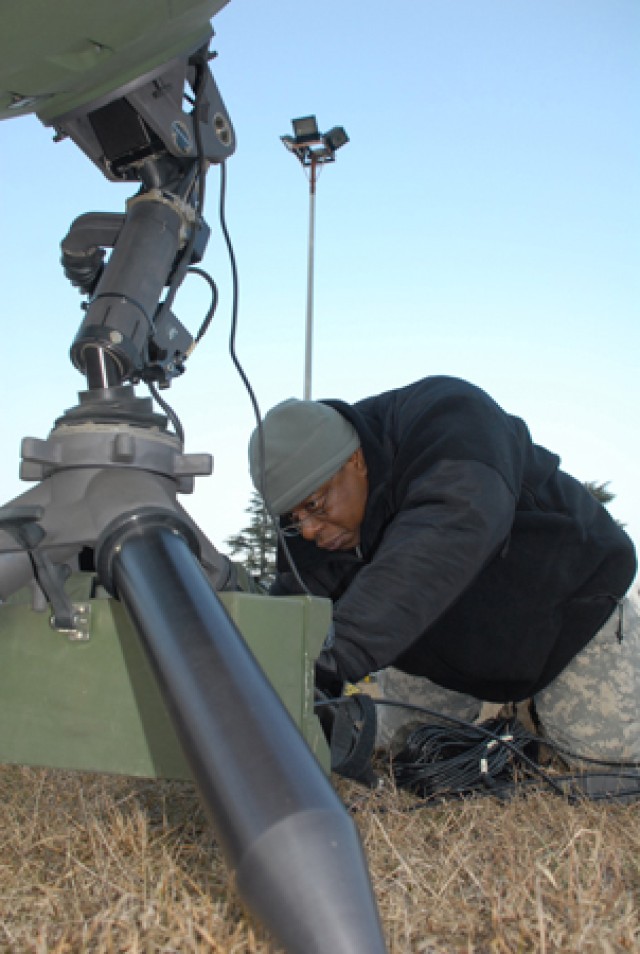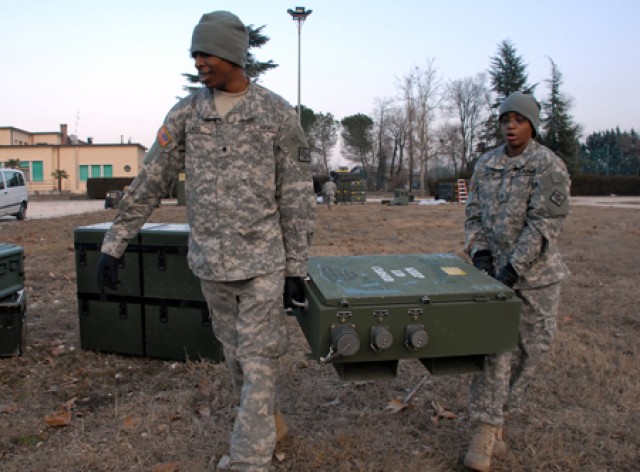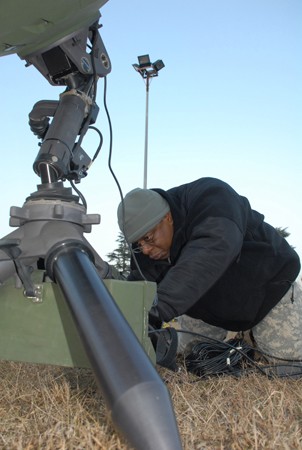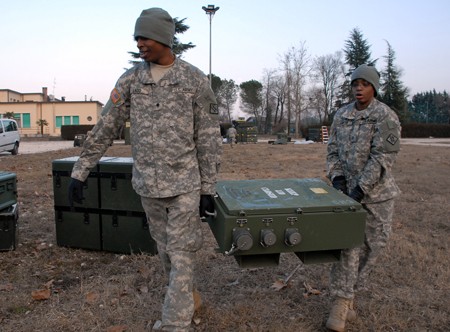VICENZA, Italy - Soldiers from Southern European Task Force-U.S. Army Africa spent the first weeks of 2009 preparing for upcoming missions to Africa.
Lion Focus, a two-week exercise that began Jan. 5, took place at two locations in Italy, Longare and Aviano Air Base. The training was conducted simultaneously with Unified Endeavor, a mission readiness exercise at the Joint Warfighting Center in Suffolk, Va., to prepare troops heading to Combined Joint Task Force-Horn of Africa.
The main exercise goal was to improve the way headquarters' staff plan and conduct operations. Scenarios tested command staff on everything from routine tasks to contingencies such as non-combatant evacuations and disaster relief, said Col. Eric Nantz, SETAF-U.S. Army Africa's senior operations officer.
"This training is an opportunity to test our capabilities and lay a solid foundation for future Army missions in Africa," Nantz said.
In early December, SETAF unfurled its new colors, signifying a change of mission for the Vicenza-based task force. SETAF is well-suited for its new role, having deployed to Africa in the past, Nantz said.
"We've always had a focus toward Africa, but this year, as the Army component to U.S Africa Command, we also have the responsibility for daily situational awareness of Army personnel and activities in 53 countries," Nantz said.
As part of the exercise, Soldiers launched an "early-entry" command post from the Vicenza suburb of Longare, northeast to Aviano Air Base. Italian Carabinieri escorted the U.S. convoy of vehicles and trailers along the route.
Relocating equipment to Aviano for training makes sense, as movement to the air base would likely be the first step toward launching any mission to Africa, Nantz said.
On a field near the flight line, Soldiers from the 509th Signal Battalion assisted SETAF-U.S. Army Africa Soldiers to construct the command post - tents filled with vital communication gear for the Army's first ground assets in any operation.
The early-entry command post, which takes roughly six hours to build, is the first part of SETAF's larger Deployable Joint Command and Control system, said Master Sgt. Frank Lauer, a SETAF-U.S. Army Africa operations NCO. The troops call the larger package "DJC2."
"It's a joint system, so it affords the opportunity to communicate with our sister services and accomplish any mission the commander needs to," Lauer said.
Once established, Soldiers in the command post use satellite technology to connect radios and computers to the main headquarters, simulating the same tasks they would undertake if assigned to a mission in Africa.
"We want to maintain our capability to move quickly and establish voice and computer communication links vital to support sustained operations, whatever our task in Africa might be," Nantz said.
It's that connectivity that allows planners to simultaneously work on tasks despite great distances. Using linked computers allows collaborative planning, Nantz said.
For SETAF-U.S. Army Africa planners at Longare, that meant working hard to build key relationships with counterparts from other units while developing tools and procedures to use in the near future. Planners from U.S. Army Europe, the Marine Corps, Navy and Air Force took part.
Logistics expertise came from the 21st Theater Sustainment Command. Army Reserve Soldiers from the 304th Civil Affairs Brigade were also involved.
SETAF staff adjusted their daily routine to synch efforts with Combined Joint Task Force-Horn of Africa's incoming headquarters staff who are undergoing pre-deployment training in Virginia. Together they mapped out key tasks for a contingency scenario.
"This is part of our transformation," Nantz said. "We are focused on building the foundation, growth as an organization and increasing our capabilities through relationships with other services."




Social Sharing